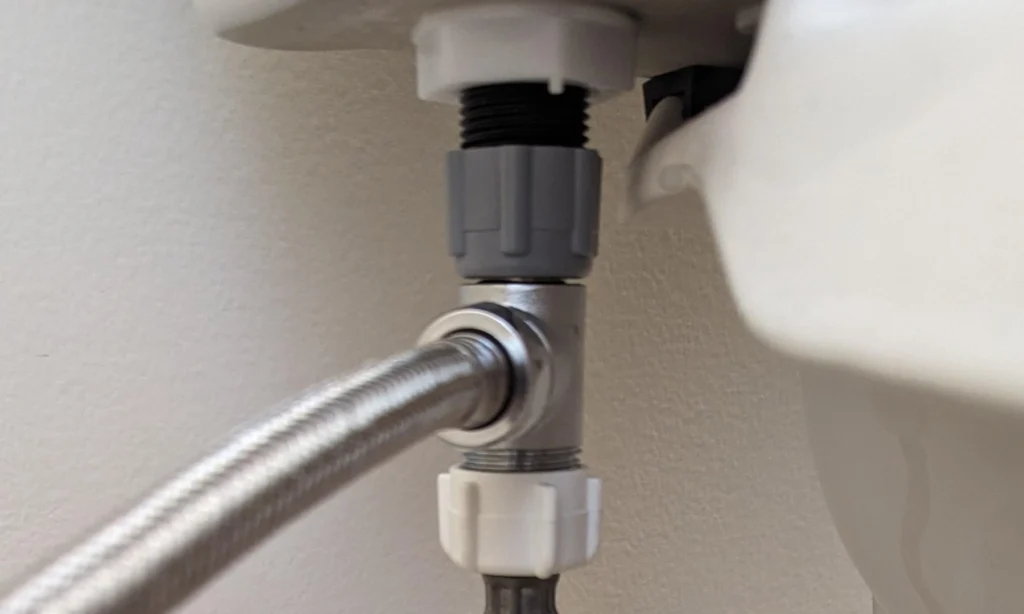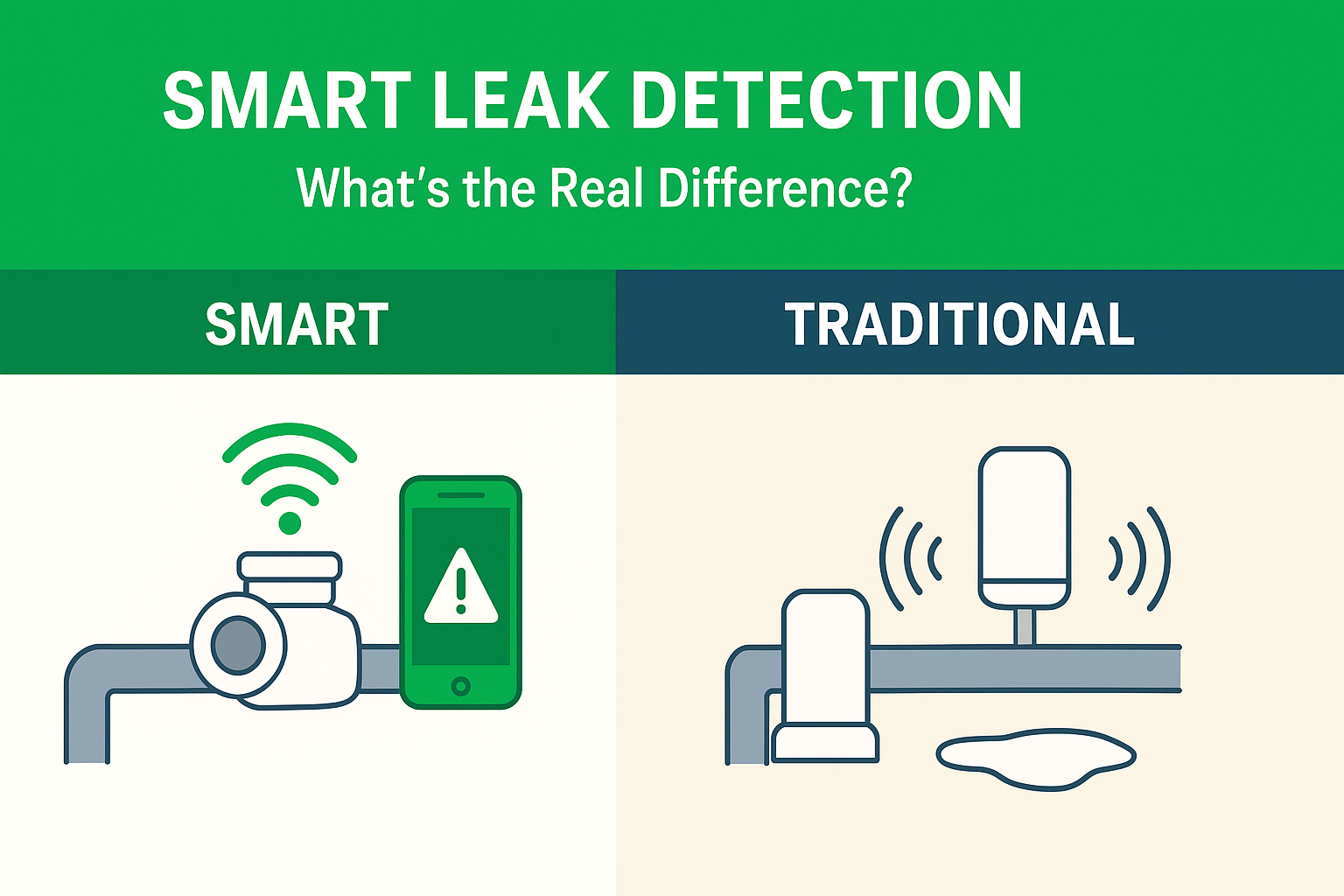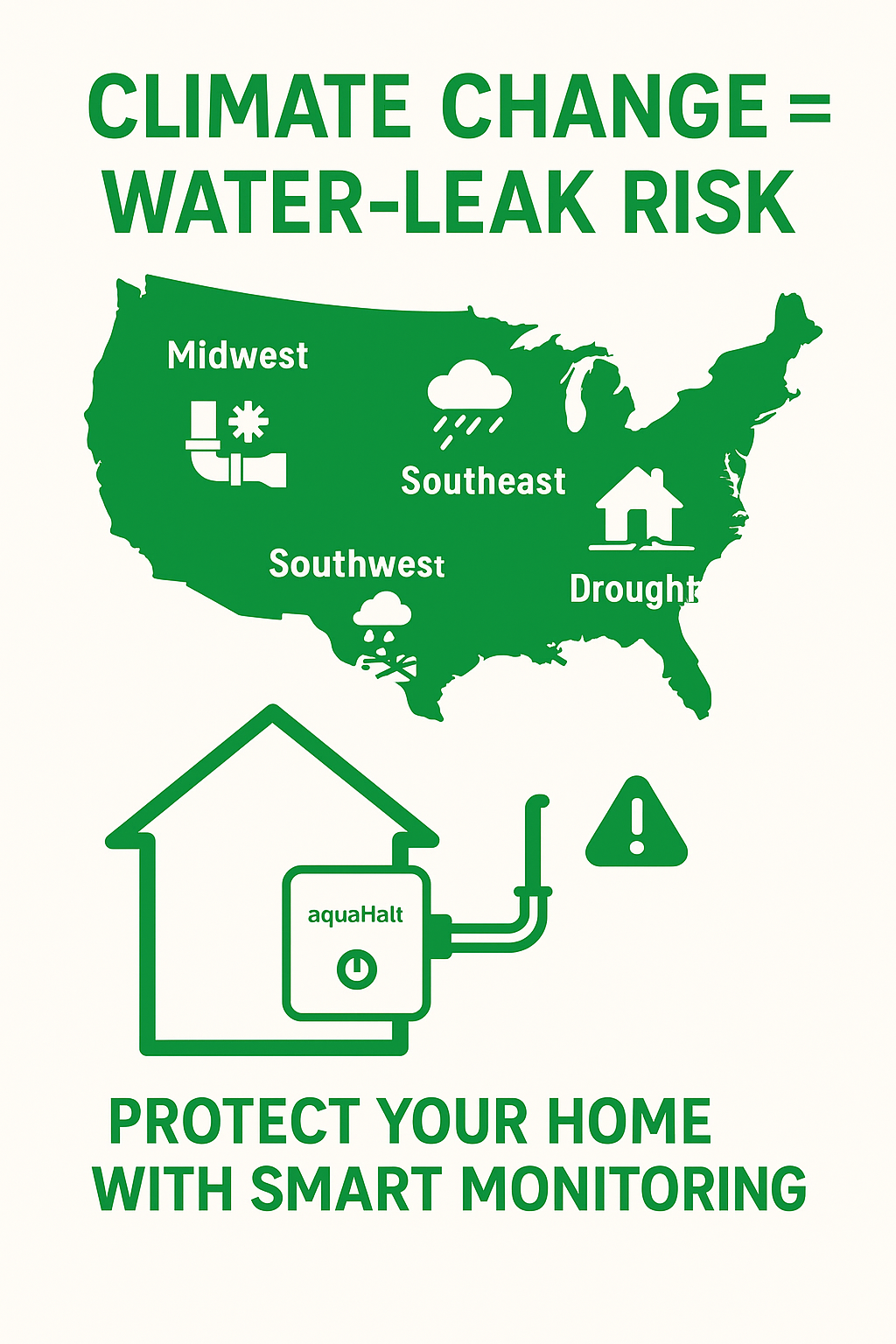
When was the last time you checked for water leaks in your home or business? It’s easy to assume everything is fine, especially when no visible signs of leaks are present. But leaks often go undetected for months or even years before they become noticeable, and by the time they’re discovered, the damage is often done. From hidden leaks inside walls to small drips under sinks, water damage can accumulate quietly, leading to costly repairs and significant disruptions.
Prevent Water Damage by staying proactive with leak detection. Many people rely on the hope that a leak will make itself known before causing major harm. But waiting for a leak to reveal itself is a dangerous gamble, one that could leave your property vulnerable to extensive water damage.
This is where AquaHALT can help you Prevent Water Damage without the stress of constantly checking for leaks. AquaHALT doesn’t require you to remember to check—it does the checking for you. It’s a simple, reliable device that detects and halts water leaks before they escalate into bigger problems. Whether it’s a tiny leak under your bathroom sink, a problematic water heater, or any other potential source, AquaHALT works around the clock to protect your property.
Installing AquaHALT doesn’t just save you from water damage; it frees you from worrying about whether you’ve missed a potential leak. It’s a set-it-and-forget-it solution that gives you peace of mind. And with easy installation—no plumbing or electrical expertise required—you can have it up and running in no time.
So, how often do you check for leaks? If the answer is “not often enough,” then AquaHALT could be the perfect solution to ensure that water damage never catches you off guard again. Stop worrying about leaks, and let AquaHALT protect your property, 24/7.
To explore more about AquaHALT and how it can Prevent Water Damage in your home or business, head over to Water Automation.

For years, homeowners have trusted simple float switches and drip sensors to warn them of water leaks. These devices were better than nothing — until you realize their biggest flaw: they only alert you after water has already escaped.
According to the Insurance Information Institute (2024), the average water-damage claim in the United States exceeds $11,000 per incident, with burst hoses, leaking valves, and failed water heaters among the most common causes.
The problem is simple — traditional alarms can’t act, they can only react.
Traditional leak detectors often:
⚠️ Alert you after the damage begins
🔌 Rely on power or Wi-Fi, losing function during outages
🧍♂️ Require manual intervention to shut off the water
So even though they “work,” they don’t truly protect.
Today’s modern systems go far beyond beeps and blinking lights. The newest generation of smart leak detection systems can automatically sense abnormal water flow, trigger alerts, and — most importantly — shut off the water instantly.
These systems combine:
Real-time flow monitoring
Automatic shutoff valves
Audible or connected alerts
But here’s the twist: not every modern system is truly smart.
Many rely heavily on Wi-Fi, mobile apps, and cloud servers — which means when your internet or power goes out, so does your protection.
That’s where aquaHalt stands apart.
The aquaHalt system, from WaterAutomation.com was designed for one mission — stop water damage at the source, instantly and reliably.
Rather than depending on smart-home integrations or mobile alerts, aquaHalt is engineered to work offline, powered by simplicity and fail-safe reliability.
It’s “smart” where it matters most — at the shut-off point.
✅ No Wi-Fi or Cloud Dependency
aquaHalt functions completely offline. It doesn’t need apps, accounts, or connectivity — and it keeps working even during power or internet outages.
✅ Instant Automatic Shut-Off
The system physically closes the water line the moment a leak is detected — preventing floods, not just announcing them.
✅ Local Audible Alarm
A loud, on-site alarm ensures the problem is noticed immediately, without relying on mobile notifications.
✅ Set-and-Forget Reliability
Powered by long-lasting AA batteries (over one year of use), aquaHalt requires zero maintenance, subscriptions, or software updates.
Feature | Traditional Alarms | Modern Shut-Off Systems | aquaHalt |
|---|---|---|---|
Internet Required | ❌ No | ✅ Often | ❌ No |
Stops Water Automatically | ❌ No | ✅ Yes | ✅ Yes |
Works During Outages | ✅ Yes | ❌ Often Not | ✅ Yes |
Maintenance | Low | High (apps, firmware) | Low |
Subscription Needed | ❌ None | ✅ Sometimes | ❌ None |
Ideal For | DIY users | Smart home setups | Landlords, homeowners, off-grid homes |
Smart doesn’t always mean complicated.
In fact, sometimes the smartest technology is the one that works quietly, consistently, and independently.
aquaHalt isn’t just a leak detector — it’s a first responder for your home’s plumbing system. It reacts in milliseconds to stop water flow and minimize damage, even when you’re miles away or the Wi-Fi is down.
For landlords, homeowners, or anyone who values simplicity with reliability, aquaHalt delivers real peace of mind.

Water damage is one of the most expensive — and preventable — maintenance issues in rental properties.
According to the Insurance Information Institute (2024), the average water damage claim in the US costs $11,605 per incident. In multi-unit buildings, that number can double because of stacked water lines and shared plumbing systems.
Yet, the EPA (2023) reports that 80% of rental water damage originates from preventable plumbing failures.
That’s why having a pre-turnover water inspection checklist isn’t optional — it’s essential for every property owner.
💡 Did you know? A simple $3 hose gasket failure under a tenant’s sink can result in $15,000+ in water restoration costs and weeks of lost rental income.
A proactive water inspection between tenants protects your property, reputation, and revenue.
Use this comprehensive checklist before every new lease signing:
Inspection Area | What to Check | Why It Matters |
|---|---|---|
Toilets & Faucets | Look for slow drips or continuous running water | Hidden leaks can waste over 5,000 gallons/month |
Appliance Connections | Verify dishwasher, washer, and refrigerator hoses | Common cause of unseen leaks and underfloor damage |
Shut-Off Valves | Test and tag all accessible valves | Quick manual shutoffs reduce emergency losses |
Water Heater | Inspect for corrosion, rust stains, or bulging | Aged units can rupture suddenly and flood rooms |
Under-Sink Cabinets | Check for dampness, swelling, or warped wood | Early warning signs of hidden leaks or mold |
Many landlords assume “smart” means connected — but reliability in rental units often means independence from Wi-Fi or apps.
That’s where the aquaHalt system from WaterAutomation.com stands out.
It’s a battery-powered, standalone leak-detection and automatic shut-off device — engineered specifically for low-maintenance and multi-unit reliability.
Key Features for Rental Properties:
✅ No Wi-Fi or Cloud Needed — Operates completely offline, ensuring it functions even during internet or power outages.
🔊 Local Audible Alarm — Emits a loud beep immediately when a leak is detected, continuing until manually reset.
🚰 Automatic Shut-Off — Instantly stops the water supply at the source (sink, toilet, or ice maker) to prevent flooding.
🔋 Battery-Powered Simplicity — Uses AA batteries that last over a year, perfect for “set-and-forget” landlords.
💡 Maintenance-Free Operation — No subscriptions, apps, or mobile alerts — ideal for managing multiple properties.
This simple, hardwired approach eliminates the complexity of connected systems while providing immediate, physical protection from water damage.
A small clause can save thousands in disputes.
Include a section requiring tenants to:
Report visible leaks immediately.
Avoid tampering with shut-off valves or detection devices.
Permit routine inspections for leak-prevention equipment.
This sets clear expectations while protecting you legally if negligence occurs.
For landlords managing apartments or condos, consistency is key:
Assign one technician to test all aquaHalt devices quarterly.
Keep a shared inspection log for each unit’s plumbing fixtures and valves.
Schedule annual plumbing assessments for stacked verticals (e.g., kitchens above kitchens).
A single failure in a multi-unit stack can impact multiple tenants — proactive checks minimize shared-loss risks.
Expense Type | Estimated Cost (USD) | Frequency |
|---|---|---|
Water restoration (after leak) | $10,000–$25,000 | Per incident |
Smart leak shut-off system (per unit) | $250–$400 | One-time |
Annual inspection | $100–$200 | Yearly |
ROI Example:
One avoided leak pays for an entire building’s worth of aquaHalt units — and then some.
Conduct a full plumbing inspection before every new tenant.
Install aquaHalt standalone leak detectors in kitchens, bathrooms, and laundry areas.
Add a water-damage clause to your lease agreements.
Keep records of maintenance and inspection dates.
➡️ Learn more about how aquaHalt helps landlords protect their investments without relying on Wi-Fi or subscriptions.
🔒 Protect your rental income before your next tenant moves in.
Discover aquaHalt — the offline, automatic shut-off system landlords trust for worry-free property protection.

What’s happening: Climate change is increasing water-leak risk in US homes by altering weather patterns—more freeze-thaw cycles, heavier rainstorms, and shifting soil conditions are straining home plumbing systems like never before.
As climate shifts intensify across the United States, the risks of water damage in homes are rising sharply. Homeowners are seeing more frequent and severe plumbing failures tied to unpredictable weather — and most don’t realize that these leaks are directly connected to climate-driven factors.
Increased freeze-thaw cycles, heavier rainfall, and even alternating drought and flooding events are putting new stress on residential plumbing systems. These subtle yet powerful changes can silently destroy property foundations, flood basements, and cause thousands in damage before the issue is even detected.
In the Midwest, climate change has increased temperature volatility. According to NOAA, freeze-thaw frequency has risen by 12% over the past decade. This means pipes are freezing and thawing more often — expanding, contracting, and eventually bursting.
Once a pipe bursts inside a wall or under a crawl space, homeowners may not notice until significant water loss has already occurred. That’s where aquaHalt’s automatic shut-off system comes in: it detects abnormal water flow and immediately cuts off supply before catastrophic damage occurs.
Quick Tip: Insulate pipes in unheated basements, attics, and exterior walls before winter. Even a simple insulation sleeve can reduce the chance of freezing by 85%.
In the Southeast, the challenge isn’t freezing — it’s flooding. Climate change has brought heavier, more concentrated storms. FEMA data shows that the region’s annual stormwater incidents have risen by nearly 20% since 2015.
This deluge increases groundwater pressure around homes, leading to foundation cracks and sump pump overloads. Once water infiltrates the foundation, it can weaken concrete and trigger long-term mold and structural issues.
Installing smart leak sensors near sump pumps and basement perimeters gives early warnings before leaks become full-blown floods. Pairing these sensors with aquaHalt’s smart shutoff adds an automated layer of protection during storm surges.
In the Southwest, the water problem flips. Prolonged drought causes the soil to dry out and contract — then flash floods suddenly soak and expand it, putting extreme stress on underground plumbing and slab foundations.
These fluctuations can fracture older pipes or loosen fittings beneath concrete. It’s a silent destroyer: leaks may continue for weeks before showing signs like rising water bills or damp patches on flooring. Monitoring systems such as aquaHalt can catch micro-leaks early by detecting abnormal flow rates and sending instant alerts to homeowners.
According to the EPA (2023), nearly 80% of household water leaks occur in hidden or underground lines. Unlike visible drips, these leaks go unnoticed — causing:
Foundation erosion
Mold growth
Rising humidity
Insurance premium hikes
Once water seeps into walls or slabs, repair costs skyrocket. A hidden pipe leak can cause $10,000+ in restoration expenses, while a smart monitoring system costs a fraction of that.
Region | Preventive Steps |
|---|---|
Midwest | Insulate pipes, seal crawl spaces, drain outdoor lines before winter. |
Southeast | Inspect gutters, test sump pumps, add basement humidity sensors. |
Southwest | Check slab plumbing annually, install leak sensors near appliances and radiant systems. |
These steps, combined with smart monitoring, can cut water damage risks by up to 60%.
The Insurance Information Institute (2024) reports that the average US water damage claim is $11,605. Compare that with the $250–$400 investment in a home leak-detection setup, and the math is simple — prevention pays for itself the first time it stops a leak.
Add the peace of mind from 24/7 protection, and the value extends beyond dollars: it’s about safeguarding family, property, and future resale value.
Audit all vulnerable water lines — especially older or outdoor systems.
Install smart sensors in high-risk areas like basements, slab floors, and laundry rooms.
Schedule seasonal inspections (spring and fall) to test for freeze or flood readiness.
Learn more about aquaHalt and how it can automate your home’s water protection system.
Climate change isn’t slowing down — and neither should your home’s protection. From Midwest cold snaps to Southeast storms, the key to resilience lies in data, detection, and decisive action.
By integrating aquaHalt into your home’s plumbing ecosystem, you’re not just installing a device — you’re building an intelligent defense system against tomorrow’s weather extremes.
Hidden plumbing leaks are one of the costliest threats to American homes. According to the Insurance Information Institute, water damage accounts for nearly 24% of all home insurance claims in the US, with average repair costs ranging from $3,000–$10,000. The culprit? Not always burst pipes — often, it’s leaks buried in slabs, floors, or behind walls that go unnoticed for months.
Below are the 10 most overlooked plumbing lines that can silently destroy property — and how smart detection tools like aquaHALT can help you stay ahead.
Why they leak: Corrosion or pressure buildup over time.
Risk: Hard to spot since pipes are embedded under tile or concrete.
Monitoring Tip: Use moisture sensors along baseboards near heated areas; install shut-off devices that respond instantly when leaks start.
Why they leak: Movement in foundations or aging copper lines.
Monitoring Tip: Look for warm spots on the floor or unexplained spikes in water bills. Pair these with an aquaHALT shut-off system to stop water flow automatically when abnormal patterns occur.
Often small and plastic, these lines crack or disconnect easily. A slow drip can rot cabinetry or floors within weeks.
Prevention: Add a leak detector like aquaHALT ICE, designed for ice-maker fittings under sinks or behind fridges.
These operate under constant pressure and can burst.
Tip: Replace every 5 years and use sensors near connections.
Visit aquaHALT H/C – Sink Protection to find the right device for your need.
When partially blocked or frozen, they can backflow and flood basements.
Monitor: Regularly inspect outdoor discharge points and use moisture sensors near the sump area.
Common in humid regions like the Southeast US.
Why it matters: Clogged drain pans overflow, damaging drywall.
Prevention: Annual maintenance plus under-unit leak detection.
Cracks from winter freezes are common.
Regional Tip: In colder states (e.g., Minnesota, Michigan), disconnect hoses before winter and insulate bibs.
Small, flexible tubes can leak unnoticed in basements or utility rooms.
Tip: Place a sensor under each connection and test monthly.
Leaks here travel behind walls.
Detection: Install small floor-level sensors in adjacent rooms, especially on upper floors.
A notorious culprit for overnight flooding.
Solution: The aquaHALT 2X or Flip models automatically detect leaks and shut off the water before overflow occurs.
A family in Dallas, TX discovered a slab leak only after noticing a $200 jump in their water bill. Repairs required concrete cutting and floor replacement — costing over $7,500. A $165 or less shut-off device could have prevented 95% of that damage.
Item | Average Cost | Preventable With |
|---|---|---|
Slab Leak Repair | $3,000–$7,500 | Flow-based shut-off valve |
Radiant Floor Repair | $1,200–$5,000 | Sensor + shut-off combo |
Ice Maker Leak Damage | $2,000–$4,500 |
Identify all water lines running under floors or behind walls.
Install smart leak sensors at low points (e.g., baseboards, near valves).
Test your system monthly.
Pair with aquaHALT shut-off valves for automatic protection.
Review data via app or indicator lights to ensure coverage.
Hidden leaks can strike any home — but you can prevent costly disasters before they start.
Equip your home with aquaHALT protection today and gain peace of mind knowing your plumbing system is monitored 24/7.